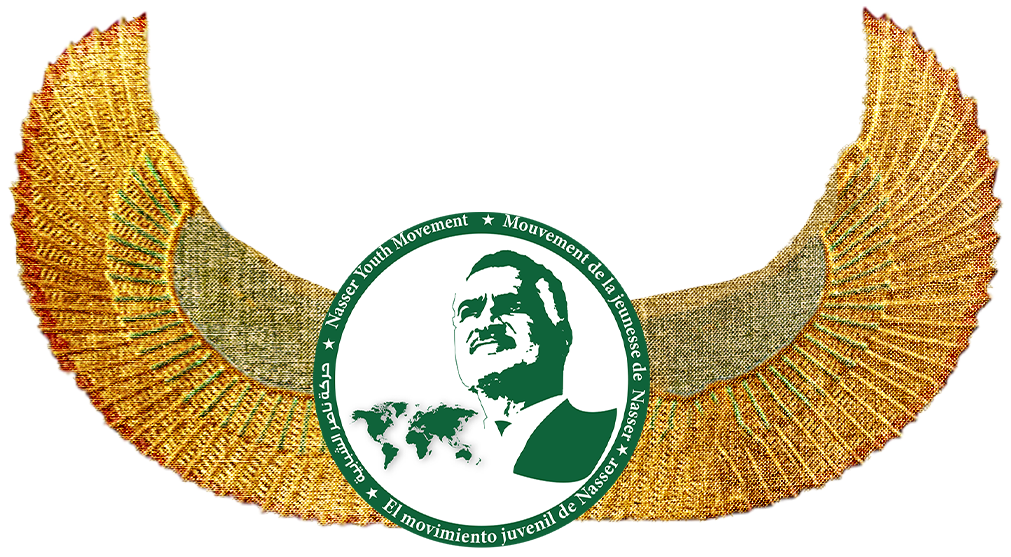Parliament of Egypt
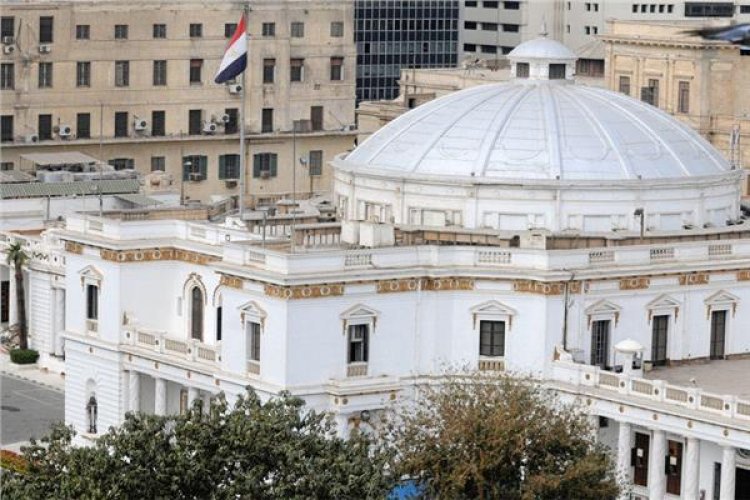
The House of Representatives is the legislative authority of the Arab Republic of Egypt. It has different competences which are stipulated for in the Constitution of 2014. According to Article 101 of Chapter 5 Part 1 of the Constitution, the House of Representatives shall be entrusted with legislation as well as approval of the general policy of the State and the general plan of development.
MOST ANCIENT LEGISLATIONS THROUGHOUT THE HISTORY OF HUMANITY
Egypt has bestowed humanity with the ancient legislative and administrative systems. On its Nile river banks, the ancient organized government had been established where it built great human civilizations and throughout the ages the glorious Egyptian civilizations followed and flourished on the basis of strong and well-established foundations in the fields of governance and management.
About 5200 years ago, King Mina, the founder of the First Pharaonic Dynasty, turned the lower and upper parts of Egypt into a unified state. He established the ancient legislative system in human history when he made the law of Tahut, the god of wisdom, as the prominent law all over Egypt and the city of Memphis as the capital and an administrative center of the first central unified state in history. That state had an organized governing body in government, administration, judiciary, education, police, army and others.
The monuments of Pharaonic civilization are good witnesses on the extent of progress to which the Egyptians reached in the systems of governance and administration. The king (the pharaoh) was the head of state where he appoints the greatest treasurer or the tax collector. A large number of state civil servants was appointed by royal decrees and they rank in their jobs. Egypt has also applied a successful system of local government since the age of the ancient state.
Since the third and fourth dynasties of the ancient Egyptian state, various decrees and legislations have been issued, such as the legislation that defined the working hours of the peasant and King Minkawra's legislation for fighting forced labor.
We can see much progress and diversity in the tasks performed by the state upon reading the inscriptions of the Tomb of Rakhmi Ra, Prime Minister and Chief Justice of King Tuthmosis the Third, on the walls of his tomb in Thebes. The tomb of Rakhmi Rai contains a complete record of legislations explaining the minister's works and functions.
In the era of the modern Pharaonic state the role of King Hor Hobb, which is one of the most important legislators in the history of humanity, emerged. His legislations were characterized by the civil nature away from religious considerations, and he also issued a number of laws that regulate the relationship between the individual person and the ruling authority. His legislations preceded others in the consolidation of the idea of freedoms and public rights such as the inviolability of housing and the sanctity of the road. he stressed the idea that the public service is a service to the people and not a means of domination and that the public servant is merely a servant of the people and not a master of them.
The Pharaonic civilization has left many traces and witnesses of this administrative and legislative development, including the text of the ancient tax legislation in history found in the tomb of the Princess "Edot" in Saqqara.
The ancient Egyptians often recorded the images of the king on their temples and tombs, offering Maat "the symbol of justice and law to the gods, in a clear reference to the sanctification of the concepts and values of justice and the rule of law.
Following the accession of Alexander, the Great to Egypt in 330 BC, the Greek rule of Egypt began, and after the death of Alexander, the period of Ptolemaic and Roman rule came. Despite the cruelty of Roman rule, Egyptians could maintain most of their traditions, systems and customs until Christianity accessed Egypt in the first half of the first century AD, where the Egyptian Church contributed to the consolidation of many systems and traditions.
In the Islamic era, the systems of governance and legislation were derived from the Holy Quran and the Noble Sunnah pursuant to the principle of Shura, which is one of the basic principles of the government systems in Islam
When Egypt became the capital of the Fatimid Caliphate (969-1171), the systems of government and legislation evolved. The city of Cairo was made as the capital of Egypt and the Islamic Caliphate.
In the era of the Ayyubid state (1171-1250), the citadel became the seat of government and the center of power, and the legislative and judicial councils varied. The Council of Justice and the Council for the Consideration of Grievances and others were established. The works of those councils included the issuance of legislations and laws and the conclusion of treaties with foreign countries.
In the era of the Mamluks (1250-1517), Sultan Al-Zaher Baybars built the Justice House in the citadel of Salah Al-Din Al-Ayyubi to be the seat of government. The terms of reference of the Governing Council in that era included the promulgation of legislations and its implementation and the settlement of disputes as well as holding negotiations with neighboring countries.
In the Ottoman era (1517-1805), the Shari'a courts were applied in Egypt where the judges applied the provisions of the Shari'a directly to all civil, criminal and legal disputes. This remained until the end of the 18th century.
During the last years of the eighteenth century, Egypt witnessed important political and social developments at the level of thought and practice.
In 1795, after less than six years of the French Revolution, Cairo witnessed a major socio-political uprising for the realization of rights, freedoms and the rule of law. In this uprising, the positions of the national forces and popular leaders had clearly advocated the people's issues of justice, equality and freedom.
In the context of the escalation of popular resistance against the Ottoman and Mamluk rulers. Egypt was on the brink of a huge popular revolution that helped scholars and popular leaders to obtain a written "text" from the Ottoman and Mamluk governor. That text was deemed as the first "Magna carta" of Egypt, where it established clear controls for the relationship between the individual person and the authority and not to impose fines or taxes without the consent of Al Azhar scholars in their capacities as representatives of the people.
THE HIGH COUNCIL
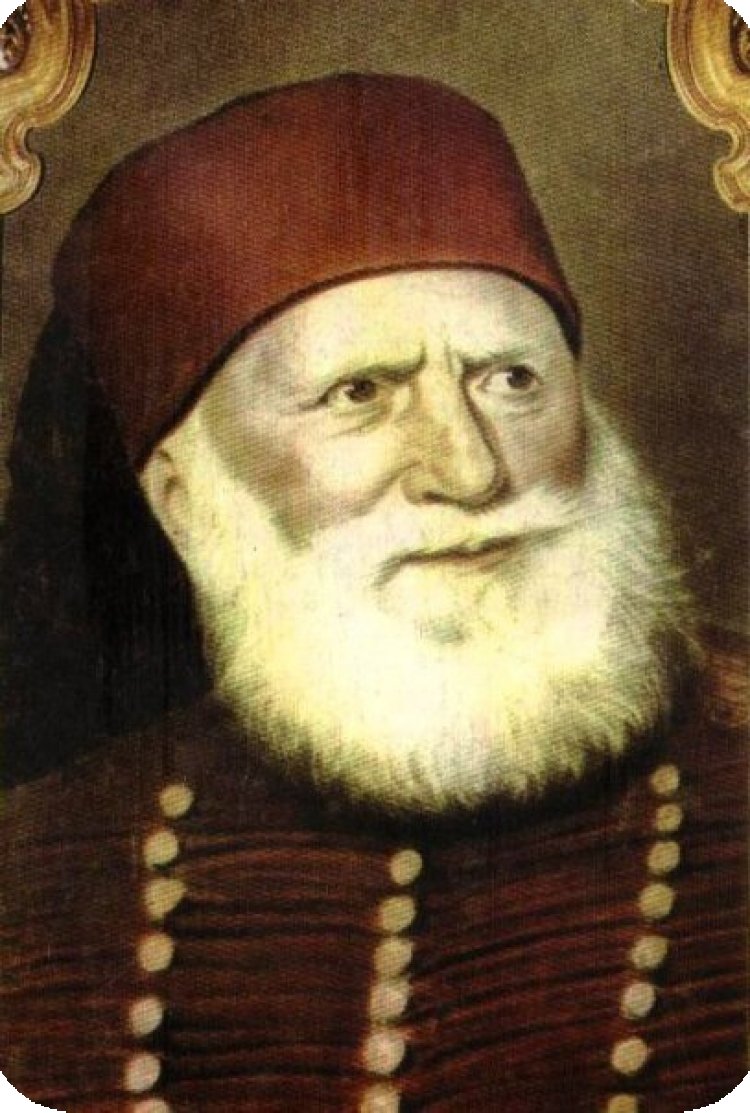
In May 1805, Egypt witnessed the first mature democratic revolution in the modern era. It was the revolution led by Al-Azhar scholars in which all classes of the society took part in. The leaders of this revolution named Mohammed Ali Pasha Wali of Egypt” in the name of the people” without waiting for the Ottoman Sultan could send a wali of his own
Mohammed Ali had pledged his allegiance to the people based on the principle” the nation is the source of authority”. Those conditions stipulated that “he administer justice, implements judgments and legislations, and acts only after their consultation, otherwise he would be removed”. Immediately after his independence by virtue of Egypt Mohamed Ali started a comprehensive administrative revolution to establish modern institutions of governance, including a representative council.
In 1824, "The High Council" was established. It was the true beginning of the first representative council whose members were partly elected and the represented all classes of people. At first it consisted of 24 members, and then they became 48 members after adding 24 Sheikhs and scholars. Thus, it became composed of the heads of departments, two scholars chosen by the Sheikh of Al-Azhar, two merchants were chosen by the Chief of merchants of the capital, two accountants, and two notables from each province of the Egyptian country who were elected by the populace.
In January 1825, the High Council issued a basic statute. It stated that its function was to “discuss whatever Mohammad Ali suggested or postulated with regard to his domestic policy” The statute also stated session dated and procedures.
THE CONSULTATION COUNCIL
In 1829, the High Council’s success in performing its function led to the establishment of the Consultation Council, which was the starting point of the Shura (consultation) system. It consisted of high- ranking, government employees, ulama, and dignitaries, chaired by Ibrahim Pasha, the son of Mohammed Ali, that council was like a general assembly consisting of 156 members, 33 of whom were high- ranking employees and Ulama, 24 superintendents, and 99 Egyptian dignitaries elected by the people.
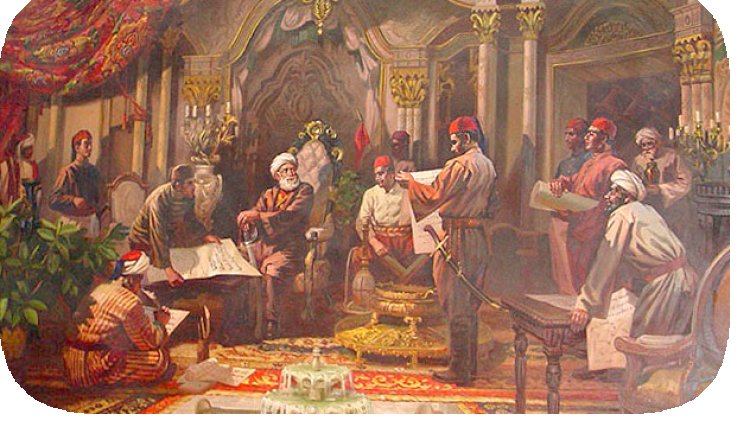
The Consultation Council held its sessions to give consultation in the field of education, administration, and public works. In 1830 that Council, rules of procedure was issued, and in 1833, the Council enacted a special law to complement its rules of procedure and organize work of relevance.
In 1837 Mohammed Ali promulgated the “State Basic Law” which subtitled the Consultation Council with “the Special Legislative Council” And the General Legislative Council” to discuss the matters referred there- to by the government. Then the cabinet was made up to seven basic portfolios.
ADVISORY COUNCIL OF REPRESENTATIVES
The year 1866 witnessed the most important development in Egyptian parliamentary life when Khedive Ismail established the “Advisory Council of representatives”. That Council was the first with representative functions. The Khedive decree on establishing this Council was issued in November 1866, which included the standing order of rules and procedures of the Council. The standing order consisted of eighteen articles that established the election system, candidate eligibility requirements and Assembly legislative terms. It included as well probing domestic affairs and forwarding recommendations to the Khedive.
The Council’s standing order and rules of procedure were highly influenced by contemporary European, particularly French, parliamentary systems.
The Advisory Council of representatives consisted of 75 members elected by dignitaries in Cairo, Alexandria and Damietta, as well as Umdas (village chiefs) and sheikhs in other provinces. They were elected for the first time in Khedive Ismail’s reign, in addition to the Speaker who was appointed by a royal decree.
The Council’s mandate was three years, and it remained in session for two months each year. It held nine sessions in three legislative terms (25 November, 1866-6 July 1879).
EGYPTIAN HOUSE OF REPRESENTATIVES
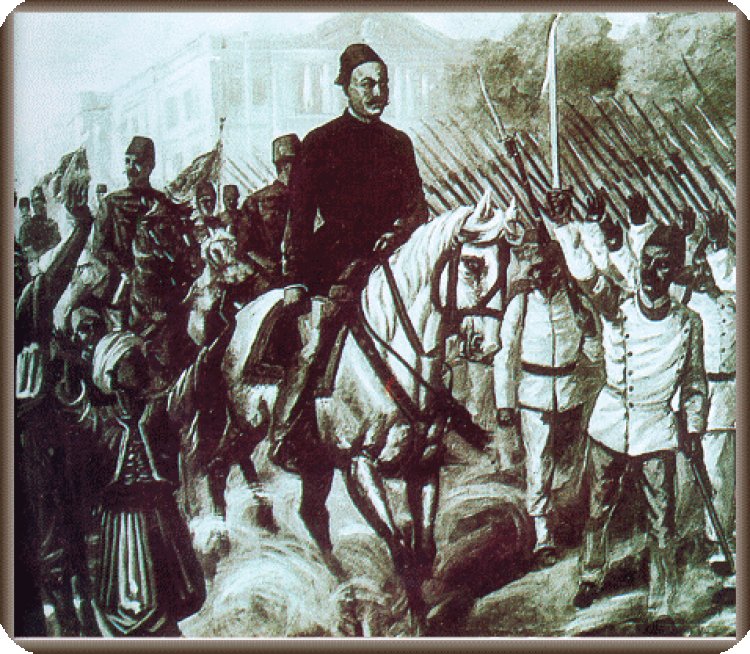
On the 19th of September 1881 AD, the Urabi Revolt broke out, and among its demands was the formation of a parliament. Indeed, the elections for the Consultative Assembly of Representatives were held in accordance with the provisions of the council’s bylaw issued in the year 1886 AD, waiting for the government to prepare a draft of a new Basic Law to be presented to the Council for approval. The new parliament, which was called the “Egyptian House of Representatives,” was inaugurated on the 26th of December 1881 AD. The government presented the draft basic law, and the supreme order was issued on February 7, 1882 AD, and this law made the ministry responsible before the parliament elected by the people, which also had the power to legislate, and the right to question and interrogate ministers. The term of the Egyptian Parliament has become five years, and the session has been three months. Thus, the rules of parliamentary democratic practice were gradually established in Egypt, but that did not last long, as the Egyptian Parliament held one regular session from December 26, 1881 AD to March 26, 1882 AD, then Britain occupied Egypt in 1882 AD, and abolished the Basic Law in 1883 AD, the so-called Regular Law was issued, which was a setback for parliamentary life in Egypt.
In 1829, the High Council’s success in performing its function led to the establishment of the Consultation Council, which was the starting point of the Shura (consultation) system. It consisted of high- ranking, government employees, ulama, and dignitaries, chaired by Ibrahim Pasha, the son of Mohammed Ali, that council was like a general assembly consisting of 156 members, 33 of whom were high- ranking employees and Ulama, 24 superintendents, and 99 Egyptian dignitaries elected by the people.
The Consultation Council held its sessions to give consultation in the field of education, administration, and public works. In 1830 that Council, rules of procedure was issued, and in 1833, the Council enacted a special law to complement its rules of procedure and organize work of relevance.
In 1837 Mohammed Ali promulgated the “State Basic Law” which subtitled the Consultation Council with “the Special Legislative Council” And the General Legislative Council” to discuss the matters referred there- to by the government. Then the cabinet was made up to seven basic portfolios.
THE LEGISLATIVE ASSEMBLY
THE ADVISORY COUNCIL OF LAWS
The Regular law issued of 1883 stated that the Egyptian parliament consisted of two chambers: The Advisory Council of Laws and the General Assembly. The law also established the Councils of Provinces whose function was administrative and not legislative and were entrusted with the election of members of the Advisory Council of Laws.
The Advisory Council of Laws whose term was 6 years consisted of 30 members: 14 appointed members, including the Speaker and one of his two deputies, and 16 elected members, including the Second Deputy Speaker. On the other hand, the General Assembly consisted of 83 members, 46 elected members and the rest were ex- officio members. The latter were members of the Advisory Council of Laws, and seven Ministers. The General Assembly is chaired by the Speaker of the Advisory Council of Laws. From 1883 to 1913, the Advisory Council of Laws and the General Assembly was held in 31 sessions in five parliamentary bodies.
THE 1923 CONSTITUTION
The Egyptian revolution broke out in 1919, after the end of the World War I, calling for freedom and independency for Egypt and the establishment of a parliamentary and democratic life.

This revolution resulted in the 28th of February 1923 declaration which recognized Egypt as an independent and sovereign state (with four reservations), and terminated Egypt as a British Protectorate.
Based on this new status, a new constitution was promulgated in April 1923, by a thirty-member committee that included representatives of political parties, popular leaders and leaders of the national movement.
The1923 constitution adopted the parliamentary representative system based on separation of and cooperation among authorities. The relationship between the Legislative and Executive branches was based on the basis of the principle of control and balance of powers. This constitution made the Cabinet accountable to the parliament that had the right to grant it confidence, while giving the King the right to dissolve the House of Representatives and to call for convening the House. However, the constitution granted the parliament the right to convene pursuant to the constitution, in case it was not called to sit according to the scheduled date.
The 1923 constitution also adopted the bicameral system: the Senate and the House of Representatives. As for the House of Representatives, the constitution stated that all its members were to be elected, for a five-year term. On the other hand, three fifths of the Senate’s members were to be elected and two fifths were to be appointed. Moreover, the constitution adopted the principle of equal competence for the two chambers as a general principle, with some exceptions.
The number of members of the two chambers was changed from time to time as the constitution adopted the principle of determining the number of members according to a certain percentage of population. Thus, under the 1923 constitution, the House of Representatives had 214 members in the period from 1924 to 1930, and then it was increased to 235 members. It was changed to 150 members under the 1930 constitution in the period from 1931 to 1934, and then it increased once again under the return of the 1923 constitution, in the period from 1936 to 1952, to be 232 members from 1936 to 1938. From 1938 to 1949, it became 264, and then it increased to 319 members in 1950 up till the July 1952 revolution.
The parliament established under the 1923 Egyptian constitution was an advanced step along the course of democracy and representation in Egypt. Nevertheless, the actual practice was tainted with several negative aspects. Political life, during the period 1923- 1952, varied between limited democratic and popular tides and periods of declines which resulted from the intervention of the occupation authorities and the Royal Palace. That led to the dissolution of the parliament for about ten times. On top of that, a new constitution was issued in 1930 and lasted for five years that were considered as a setback to democratic life, until the 1923 constitution was restored in 1935.
Thus, the constitutional conditions deteriorated due to internal and external reasons. This deterioration was reflected in a state of political and governmental instability to the extent that Egypt had developed 40 cabinets in the period 1923-1952.
PARLIAMENTARY LIFE IN EGYPT AFTER THE REVOLUTION OF 1952
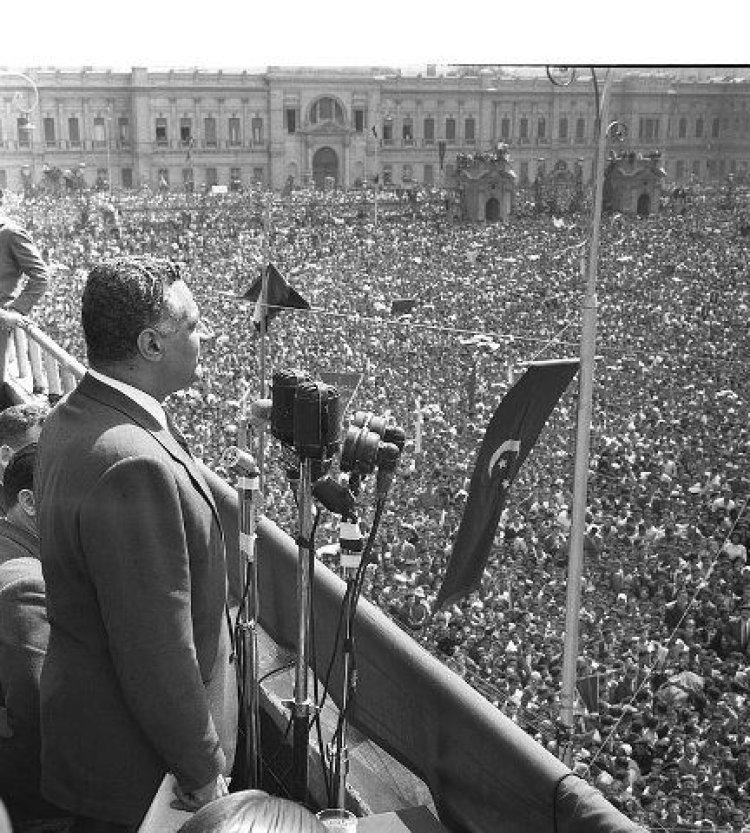
The establishment of a sound democratic life was among the fundamental principles of the July 23, 1952 revolution. In the wake of the abrogation of the former constitution, the declaration of the republic and the dissolution of parties.
In 1956, the new constitution was proclaimed stipulating for the formation of the national assembly on 22 July 1957. It was made up of 350 elected members and remained effective until 10 Feb. 1958, when the Egyptian – Syrian merger was given force and the 1956 constitution revoked. The provisional constitution of the Arab Republic of Egypt was formulated in March 1958, and a joint National Assembly was established, its members were appointed (400 from Egypt and 200 from Syria). It first met on 21 July 1960 and lasted to 22 June 1961. Egypt and Syria were later separated on 28 Sept. 1961.
In March 1964, a further provisional constitution was declared, giving birth to a 350- elected member National Assembly, half of whom at least from workers and farmers- in reaction to the then July 1961 socialist laws plus 10 members appointed by the president of the Republic.
This Assembly lasted from 26 March 1964 to 12 November 1968. New elections were held on 20 Jan. 1969, and the Assembly was valid until 1971.
September 11, 1971, the now effective constitution was proclaimed and was valid until the constitutional declaration in 13\2\2011 following the January revolution. In 1976, the legal elections was conducted on multi-forum basis within the Arab Socialist Union- the only political gathering at the time.
In 1979, party- based legislative elections were conducted for the first time in Egypt after political parties were done with in the wake of the 1952 revolution. Parties, formed according to the political parties’ law in 1977 had taken part in the said elections.
In 1980, the Shura Council was set up to broaden the scope of political and democratic participation.
However, experience yielded the return to the individual majority system in 1990. The Republic was divided into 222 constituencies, two members for each constituency, one at least from laborers and farmers.
In addition, the number of members of the People's Assembly reached 454 members, including ten members appointed by the President. Following the January Revolution, The law of the People's Assembly and Shura Council was amended in 1972 to become two-thirds of the People's Assembly with the closed party list system and the other third in the individual system.
In addition, the number of members of the Council in accordance with those amendments, 498 members are chosen by direct secret public election, at least half of them are workers and peasants, failing to 10 deputies at most may be appointed by the President of the Republic.
This had been made according to the amendment to the Constitution after a public referendum, which marked the return of Egypt to the bicameral system. After the revolutions of 25th January and 30th June, Egypt witnessed a political surge triggered by the popular movement which resulted in many legislative elections and then the establishment of the current parliament under the 2014 constitution after the constitutional referendum on 18 January 2014. In 2016 and according to this constitution, the Parliament converted to the unicameral system once again under the name of The House of Representatives. This House was entitled a number of unprecedented aspects pertaining to its formulation and competencies that it contains – for the first time - (90) women with a ratio of 15% to the total number of its members, (9) members with disabilities, (8) members representing Egyptians abroad and young parliamentarians (under 35) who are largely represented in this House with a ratio of 25% to the total number of members. That’s why the 2016 parliament is an important milestone in the long Egyptian parliamentary life that has witnessed some crucial events and historical developments, which demonstrates how deeply rooted the Egyptian representative experience is.
Sources
Parliament of Egypt website
